On this day in 1953, America met the Corvette
Seventy years ago, on January 17, 1953, forty-five thousand people attending General Motors’ Motorama at New York’s Waldorf-Astoria hotel witnessed a sports car revolution. It was the birth of a racing-inspired, American two-seat roadster—at an attractive price. With Chevrolet today unveiling the E-Ray, its first-ever hybrid, all-wheel-drive Corvette, in New York, let’s take a look back.
The Waldorf’s plush velvet grand ballroom was decorated to the rafters hosting what amounted to an early modern American auto show. Guide models were adorned in designer gowns. Choreographed orchestras, singers, and dancers provided background entertainment. While GM’s top four divisions all presented dream machines, it was the company’s entry-level Chevrolet brand that stole the show.
At this juncture, the Corvette was but a hypothetical showroom sibling to Bel Air sedans and Chevy pickup trucks. Leave it to Harley Earl, perhaps the most powerful and influential design boss in automotive history, to ram his Corvette concept through the corporation and to the Waldorf with minimal resistance. Soon, the Vette was on its way to an assembly line.
In the fall of 1951, Earl provided GM’s one-off Buick LeSabre to serve as the pace car at a major Watkins Glen, New York, road racing event. Thoroughly dipped in the day’s European sports cars at that meeting, Earl returned home convinced that America deserved its own sports car capable of running with contemporary British and Italian two-seaters.
“Project Opel” began in a secret corner of GM’s Detroit design department with four of Earl’s most trusted designers diligently advancing his whim toward reality. Half a dozen GM sculptors and engineers soon joined the team.

Project Opel was no pipe dream. With a wide, low body over a lean 102-inch wheelbase, its form blended aggression with Fifties modernity. Chassis and driveline components varied only where necessary from hardware in production throughout GM. Boxing the frame rails was deemed necessary because of the engineers’ desire to experiment with molded fiberglass for the body—a material less stiff than traditional steel stampings.
Less concerned about the mechanical details, Earl’s styling team borrowed an existing Chevy six engine, two-speed Powerglide automatic transmission, and rigid rear axle from GM parts bins. To add zing, the inline-six was boosted from 115 to 150 horsepower with higher compression, more aggressive valve timing, and triple carburetors. With an eye on weight distribution, the engine was mounted as low and as far rearward as possible.

Throughout 1952, Project Opel advanced through clay model to wood and plaster forms for upper management review. While there was widespread enthusiasm for the project, GM President Harlow Curtice withheld production approval until he had some customer feedback in hand. That hesitancy didn’t hinder engineers from assuring that Project Opel could make a swift pivot to the production line.
The first running prototype wearing “engineering car #852” and “EX-52” labels was finished a few days before Christmas 1952. Still missing at this juncture was a compelling name. Myron Scott, a member of Chevy’s public relations department raised his hand to suggest CORVETTE. In 1935, the clever Scott had created the Soap Box Derby with Chevy’s backing.
During World War II, the Corvette name was employed by the British Navy for its compact fast attack ships. Bringing the right ring to the game, the Corvette nameplate replaced engineering code identifiers only days before the Motorama show’s opening.
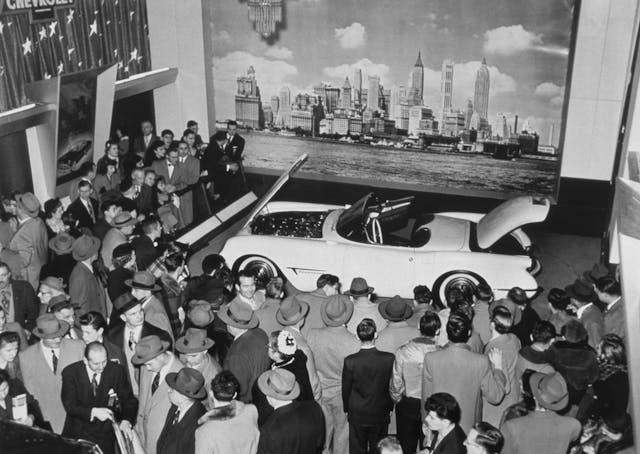
Attendees were clearly excited viewing the Corvette and were anxious for answers to their how-soon, how-much inquiries. Lacking proper market assessment, Curtice took the pulse of the crowd; on the show’s second day he announced that production would commence as soon as possible.
While there were hopes of eventually using steel for the Corvette, between July and December of 1953, 300 salable fiberglass-bodied Corvettes were built at an interim production plant in Flint, Michigan. Today, those cars are priceless collectibles even though their driving and performance attributes are modest by any standard.
You’d rightfully expect that the 852/EX-52 Motorama show car would be the uncontested Mona Lisa of this limited-production group. That’s not the case; with no thought of saving the show star for future admiration, it was unceremoniously parted out after accumulating 111 miles on the 1953 U.S. show circuit. The chassis was rebuilt and modified for use under the 1954 Motorama Chevy Nomad Station Wagon. The body was shipped to GM’s proving grounds where engineers lit it afire to assess the flammability of fiberglass body panels.
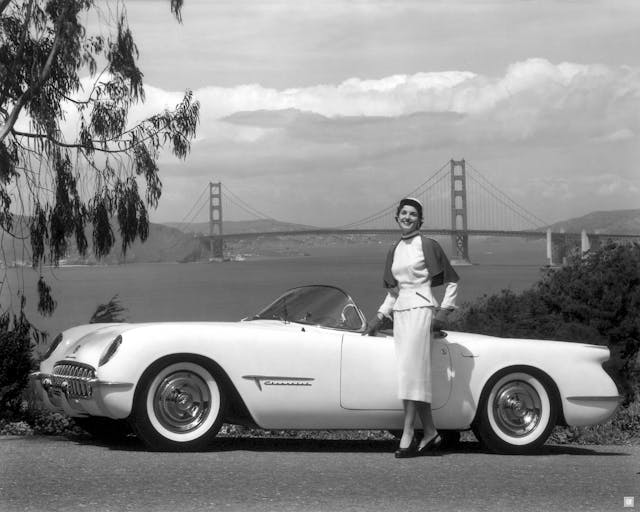
On the brighter side, one individual in the Corvette’s debut crowd was about to greatly energize its cause. Zora Arkus-Duntov, a 43-year-old, Belgian-born, unemployed engineer and race driver, was smitten by the Corvette at first sight. While he thought this was the most beautiful automobile he’d ever seen, he was deeply disappointed by what laid under the fiberglass panels.
Determined to remedy those faults, Arkus-Duntov wrote compelling letters to Chevy’s chief engineer Ed Cole and other GM managers that earned him a job as an assistant staff engineer at Chevrolet. On May 1, 1953, Arkus-Duntov began his GM career and promptly began converting the Corvette from a shallow beauty into a world-class sports car. The rest is history.
Seventy years later, Arkus-Duntov is long gone, but his driving spirit shines brightly, and particularly throughout the Corvette’s eighth generation.
Check out the Hagerty Media homepage so you don’t miss a single story, or better yet, bookmark it.
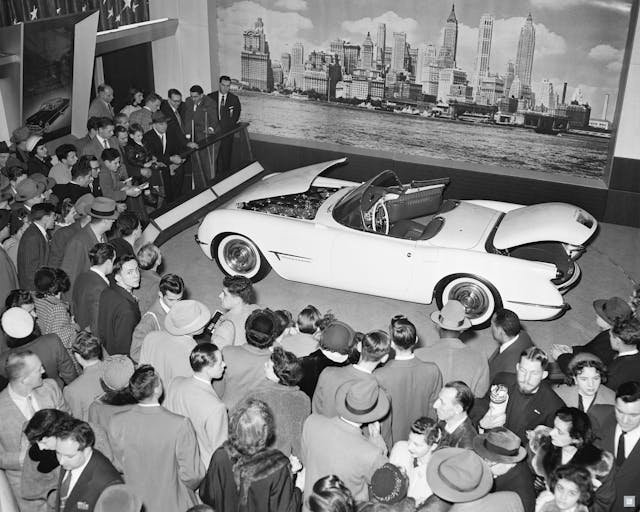
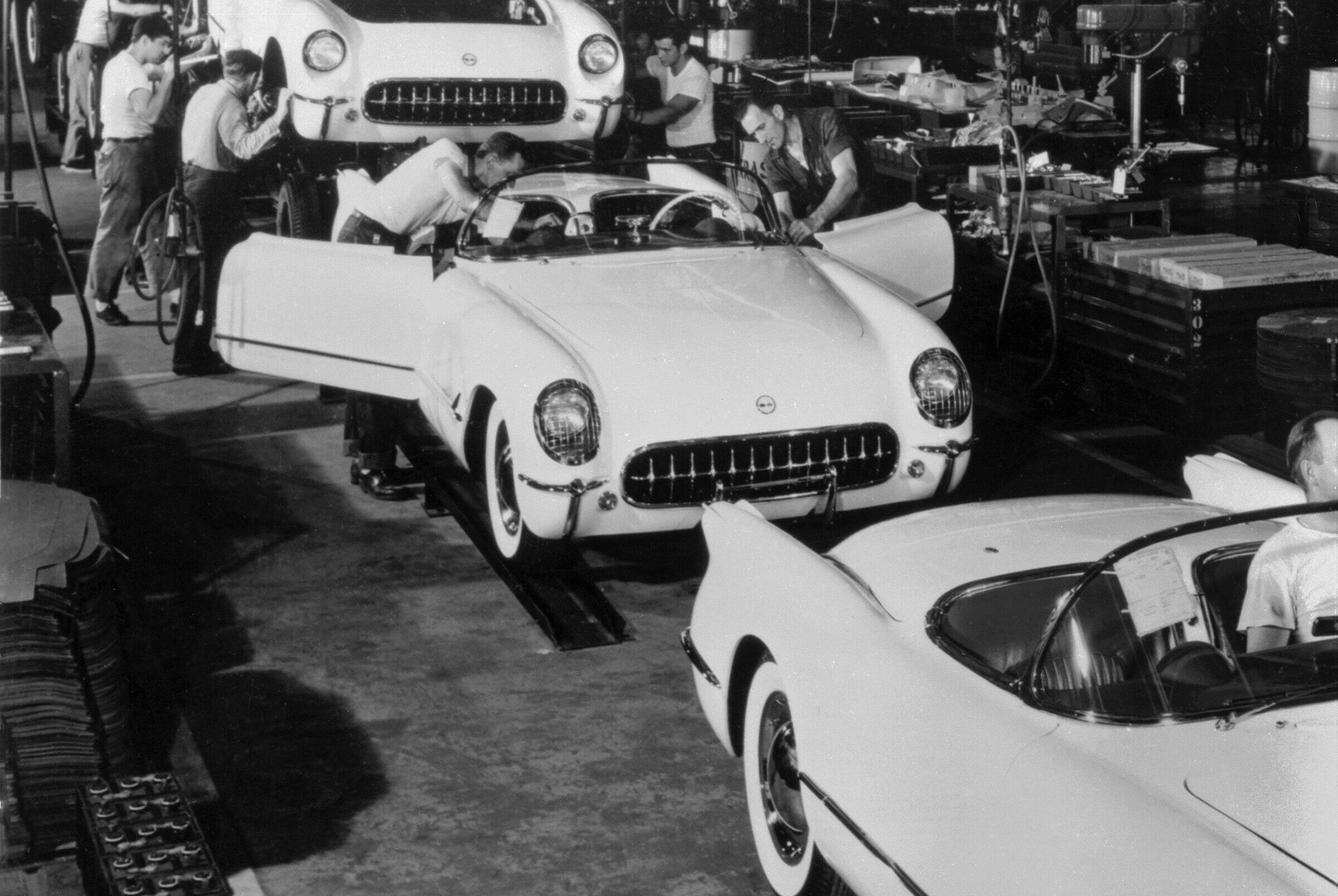
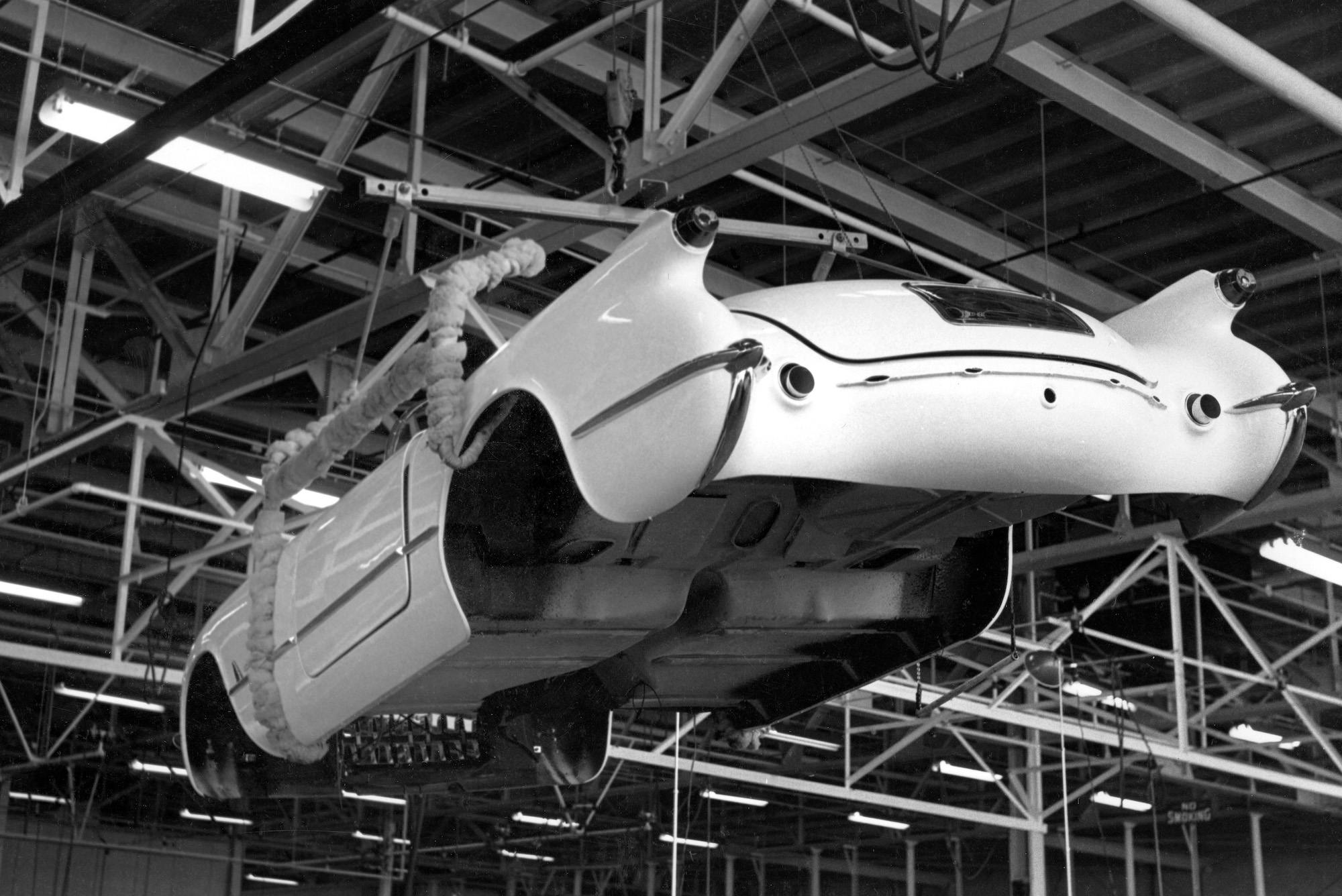
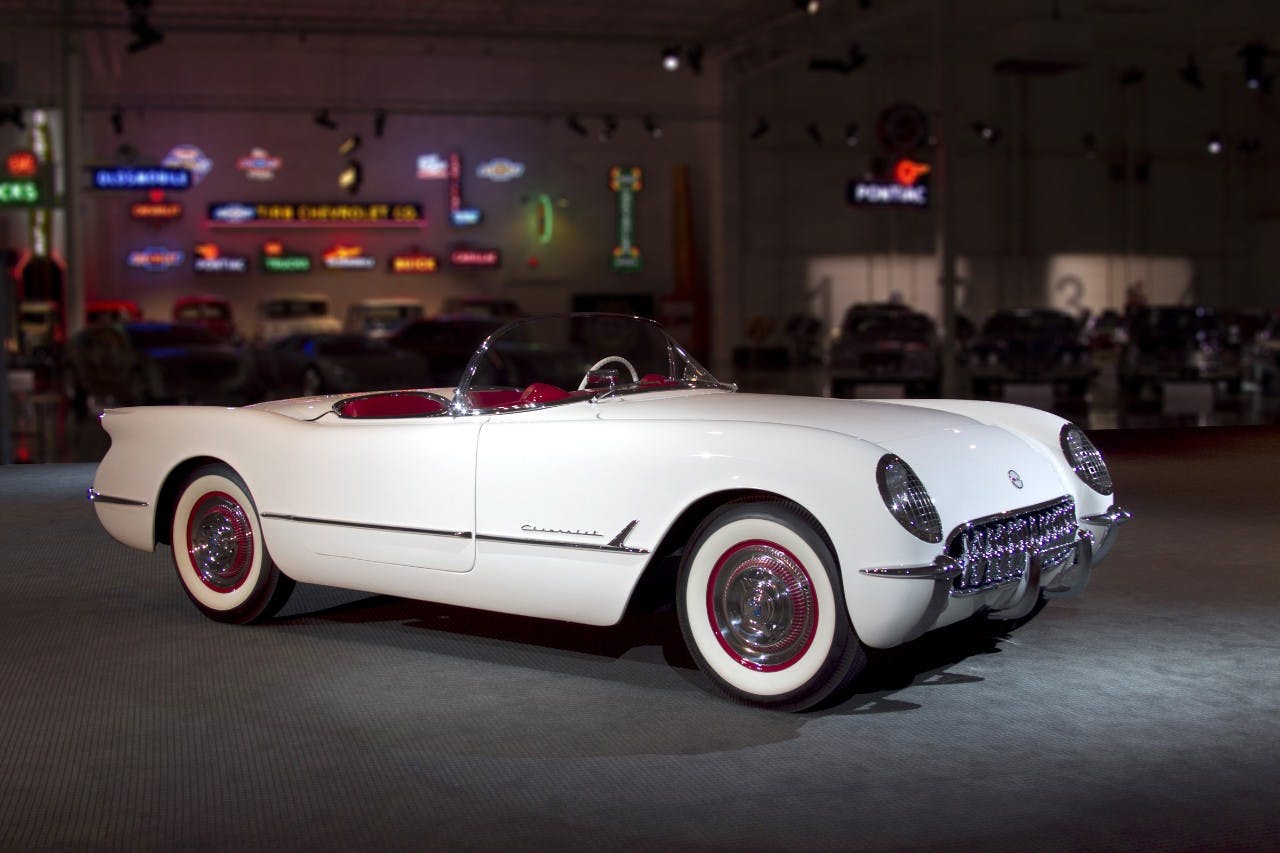

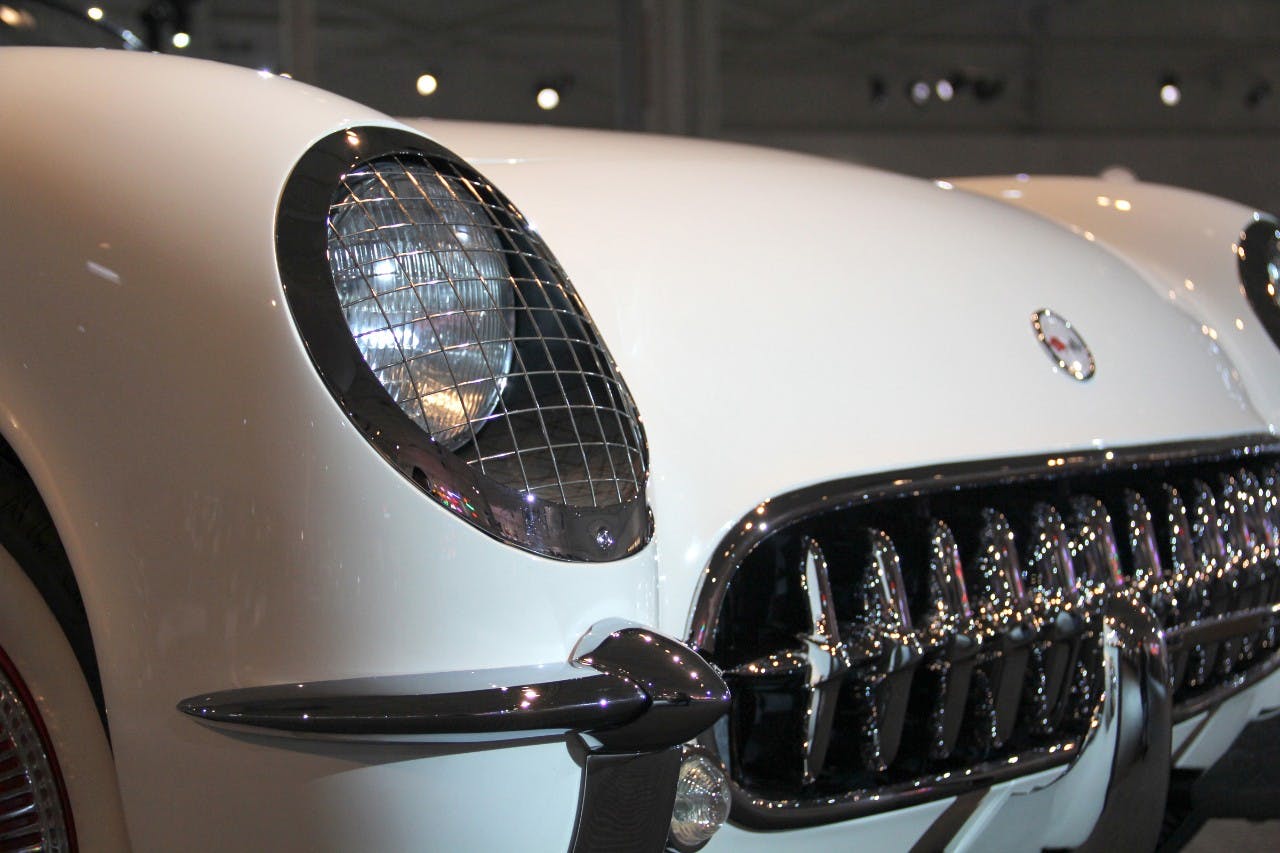
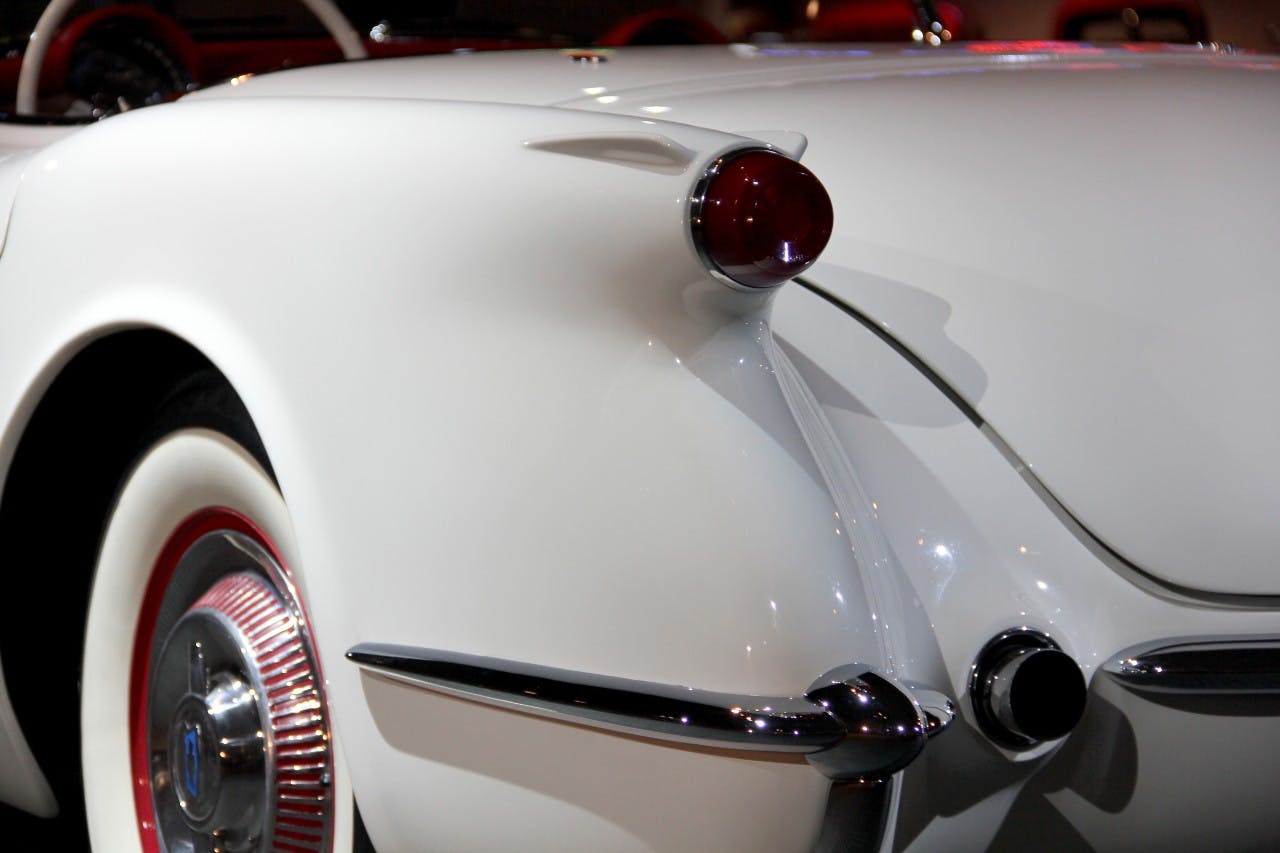
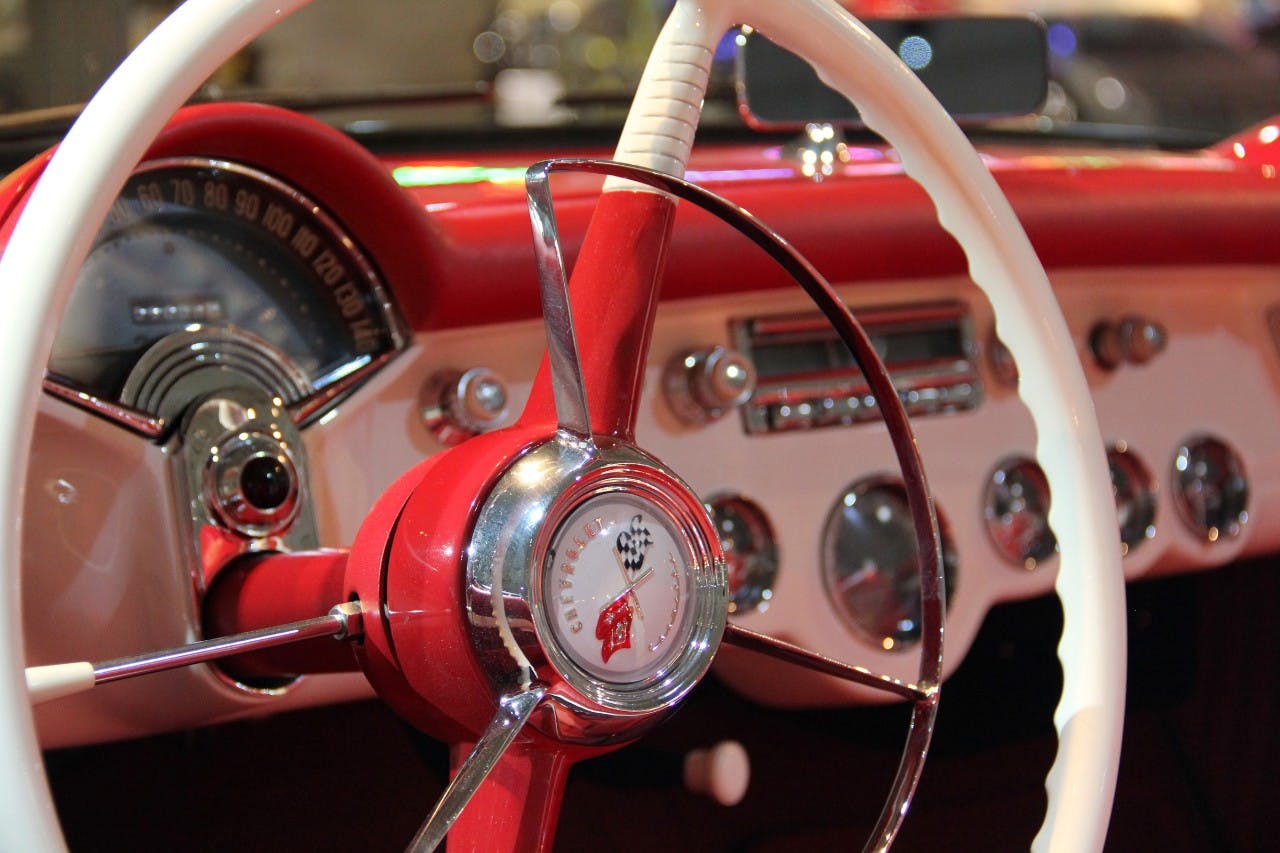


Diver Chevrolet in Delaware got a very early corvette, i believe it had to do with the debate whether to produce the car and the duPont family was somehow involved. My facts are kinda fuzzy, long time ago
If I remember correctly, the original fiberglas car bodies were expected to last 10 years.
No disputing — the Corvette WAS born then, yet…
As everyone knows; it was a weak, even “preemie”, entry into the world.
Automatic, 2-speed transmission, and a six-cylinder engine.
Pre-dated two years by the superior Nash-Healey.
So, the Corvette actually wasn’t America’s First Sports Car.
It HAS come a long way.